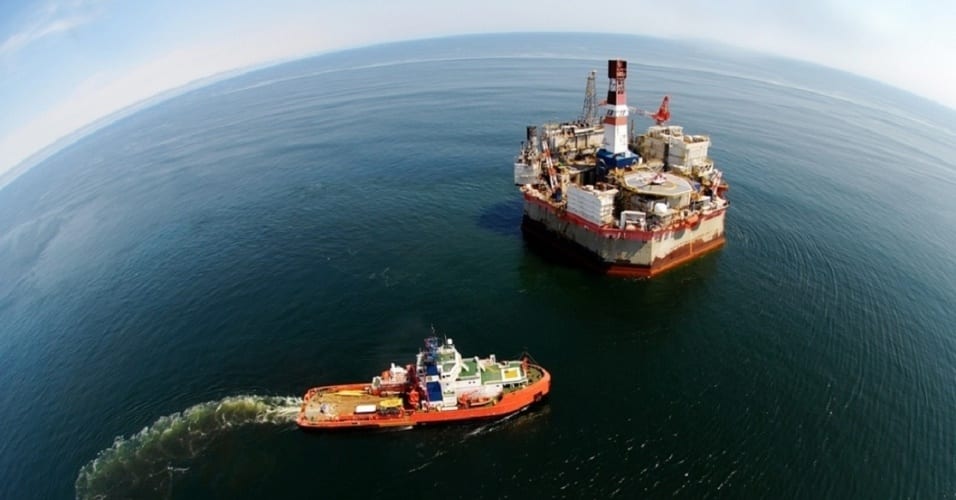Output from oil fields in Brazil’s subsalt frontier covered by production-sharing agreements will surge over the next decade to 3.9 million b/d by 2031, surpassing the country’s current total output of about 2.9 million b/d, the head of government subsalt management company Pre-Sal Petroleo SA, or PPSA, said Monday.
“Output from the current production-sharing contracts should peak in 2032,” PPSA Director General Eduardo Gerk said during a technical forum hosted by the company. PPSA represents Brazil’s government in the production-sharing agreements and sells the country’s share of oil and gas output on behalf of the government.
The PPSA forecast does not include output from subsalt prospects located outside the polygon that requires production-sharing agreements, which are expected to further boost Brazil’s output over the next 10 years. Brazil’s National Petroleum Agency, or ANP, estimates that the country will produce a total of about 5 million b/d by 2030.
PPSA released the latest estimates for Brazil’s prolific subsalt region as part of a study that detailed the impact of the latest subsalt bid rounds on Latin America’s largest oil and gas producer in 2020-2032. The study includes forecasts for the 14 production-sharing deals currently in place as well as three accords covering subsalt acreage sold earlier this month that will be signed in early 2020.
The 2020-2032-time frame was selected because investments in the 17 areas should be completed by 2032, with production from the fields peaking, Gerk said. First oil from each of the areas covered by the production-sharing agreements is expected approximately eight years after the contract signing, Gerk said.
Brazil’s first production-sharing auction was held in 2013, when the Libra area was sold. First oil from the Mero Field inside the Libra ring fence is expected in 2021, Petrobras Exploration and Production Director Carlos Alberto Pereira de Oliveira said during a separate presentation.
The country’s second and third subsalt production-sharing auctions were held in 2017, when annual sales were restarted. Earlier this month, Brazil held the sixth subsalt production-sharing sale as well as the sale of excess volumes discovered in the transfer-of-rights areas, which were subsalt blocks awarded to state-led oil producer Petrobras in 2010. The company received rights to pump 5 billion barrels from the acreage but discovered nearly four times that amount.
Brazil sold development rights to excess volumes from the Buzios and Itapu fields in the transfer-of-rights region on November 6, while development rights to the Aram block were sold November 7. Petrobras purchased a 90% operating stake in Buzios, Brazil’s second-biggest production field, in partnership with China’s CNOOC and CNPC, which will each hold 5% minority stakes. Petrobras purchased 100% of Itapu. Petrobras snapped up an 80% operating stake in Aram, with CNOOC retaining the remaining 20%.
The Atapu and Sepia transfer-of-rights fields, which failed to sell at the November 6 auction, will be offered up for bid again in 2020, Gerk said.
Petrobras maintains a hefty position in the subsalt production-sharing areas, but most of the world’s biggest oil companies including BP, Chevron, Equinor, ExxonMobil and Shell hold acreage in the prolific region. Recent bid rounds have also seen smaller players such as Ecopetrol and Qatar Petroleum participate in winning bid consortia.
The government receives a portion of profit oil from each of the areas, which range from a high of 80% from the Sapinhoa Field to a low of 10.01% from the Sudoeste de Tartaruga Verde area, Gerk noted. Sapinhoa is Brazil’s third-largest oil and gas producer. PPSA estimated that the government’s slice of output will reach 1.2 million b/d by 2032, generating about $110 billion from sales of oil and gas output.
Oil companies will invest $135 billion in 2020-2032 to develop the acreage, according to the PPSA study. The PPSA estimates that 28 new floating production, storage and offloading vessels, or FPSOs, will be installed during the 12-year period, with 2,500 kilometers of subsea lines connecting 474 production and injection wells to the vessels, Gerk said. The investments include nearly $50 billion for the floating production units and $50 billion to drill and complete the wells, according to the executive.
Peak development activities in the areas will take place in the mid-2020s, with an estimated 18 new FPSOs installed in 2025-2030, Gerk said. In 2026, six new floating production units will be installed in a single year, rivaling Petrobras’ unprecedented run of eight new FPSOs over the past 18 months that has pushed Brazil’s oil and gas output to fresh record highs earlier this year. Each FPSO will have installed capacity to produce 50,000-220,000 b/d, depending on the size of the field, Gerk said.
Source: S&P Global



